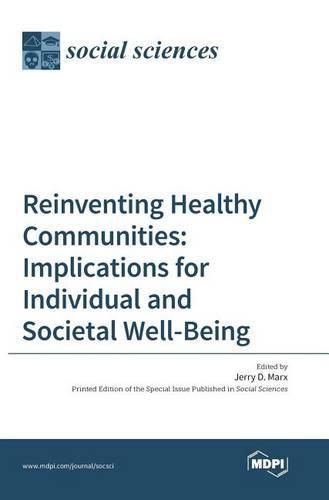Readings Newsletter
Become a Readings Member to make your shopping experience even easier.
Sign in or sign up for free!
You’re not far away from qualifying for FREE standard shipping within Australia
You’ve qualified for FREE standard shipping within Australia
The cart is loading…






This title is printed to order. This book may have been self-published. If so, we cannot guarantee the quality of the content. In the main most books will have gone through the editing process however some may not. We therefore suggest that you be aware of this before ordering this book. If in doubt check either the author or publisher’s details as we are unable to accept any returns unless they are faulty. Please contact us if you have any questions.
Contemporary views of livable communities maintain that density and diversity are good for cities. Healthy communities are more pedestrian-friendly and less automobile-centric. Mixed use zoning keeps a flow of people through parks, streets, neighborhoods, and districts, which is good for business, safety, and tourism. Dwellings are human scale and locally-sourced food is more sustainable for the environment and healthier for individuals.
But how should social institutions collaborate with those of the economic and political sectors to maximize community well-being? The United Way partnership model and the growing concern for triple-bottom-line outcomes involving financial, social, and environmental considerations offer a broad perspective on healthy communities.
This special collection, therefore, employs a wide lens to examine multiple factors that characterize healthy communities including inclusiveness, equity, human rights, and mutual assistance. Researchers from various fields including psychiatry, public health, sociology, political science, community planning, economics, kinesiology, and social work present their findings on critical issues impacting the health of communities.
$9.00 standard shipping within Australia
FREE standard shipping within Australia for orders over $100.00
Express & International shipping calculated at checkout
This title is printed to order. This book may have been self-published. If so, we cannot guarantee the quality of the content. In the main most books will have gone through the editing process however some may not. We therefore suggest that you be aware of this before ordering this book. If in doubt check either the author or publisher’s details as we are unable to accept any returns unless they are faulty. Please contact us if you have any questions.
Contemporary views of livable communities maintain that density and diversity are good for cities. Healthy communities are more pedestrian-friendly and less automobile-centric. Mixed use zoning keeps a flow of people through parks, streets, neighborhoods, and districts, which is good for business, safety, and tourism. Dwellings are human scale and locally-sourced food is more sustainable for the environment and healthier for individuals.
But how should social institutions collaborate with those of the economic and political sectors to maximize community well-being? The United Way partnership model and the growing concern for triple-bottom-line outcomes involving financial, social, and environmental considerations offer a broad perspective on healthy communities.
This special collection, therefore, employs a wide lens to examine multiple factors that characterize healthy communities including inclusiveness, equity, human rights, and mutual assistance. Researchers from various fields including psychiatry, public health, sociology, political science, community planning, economics, kinesiology, and social work present their findings on critical issues impacting the health of communities.